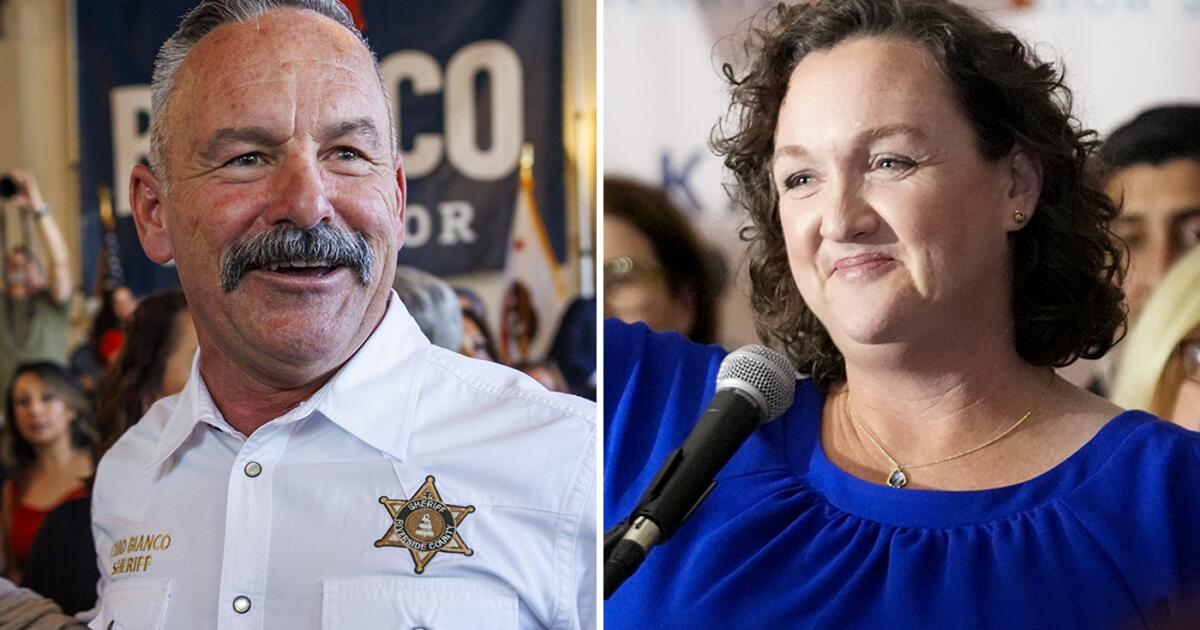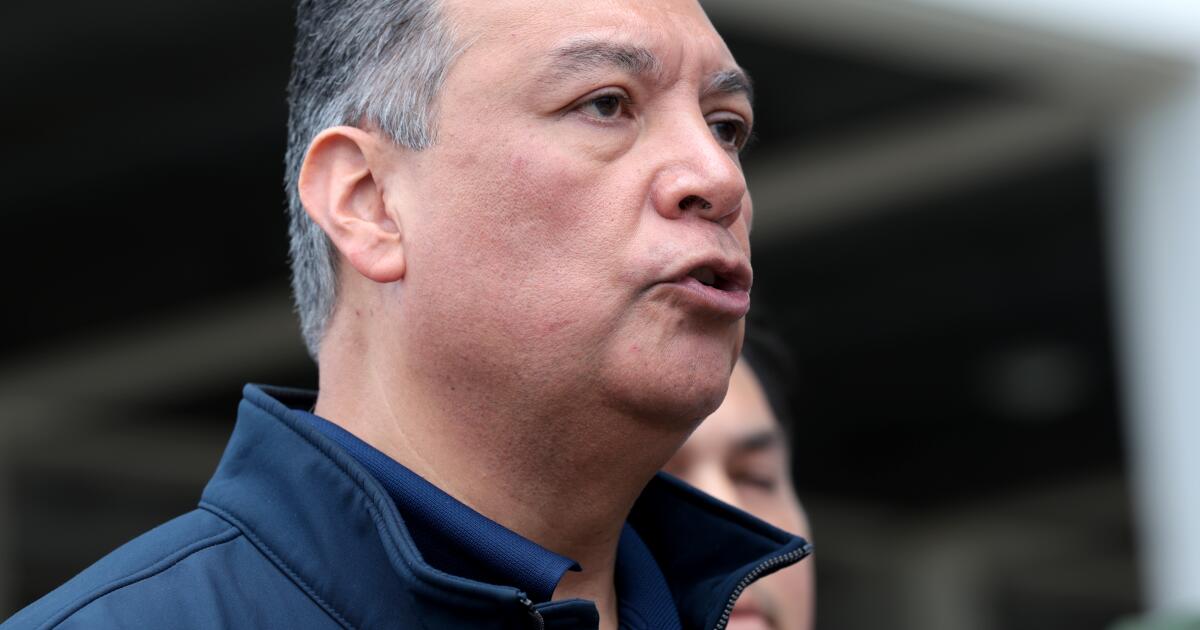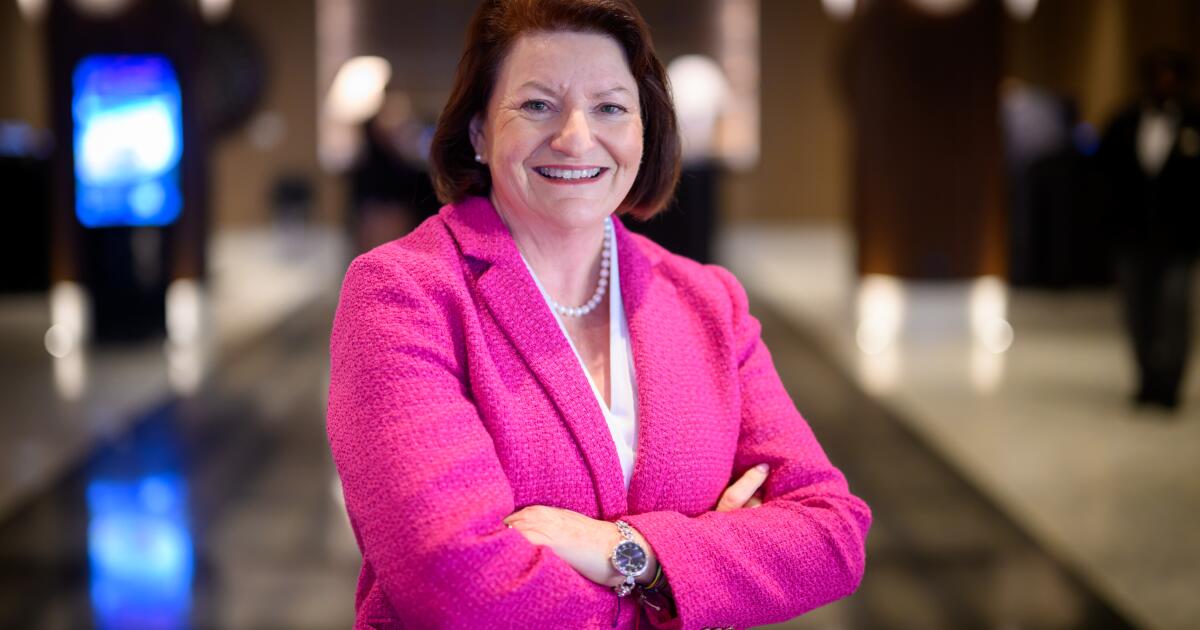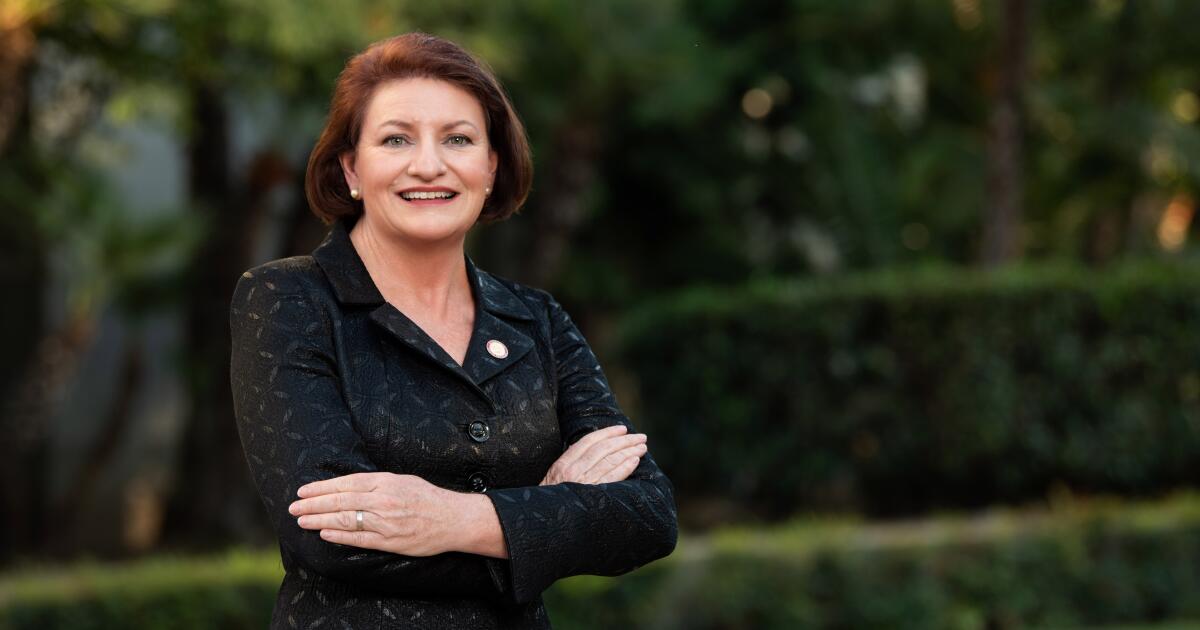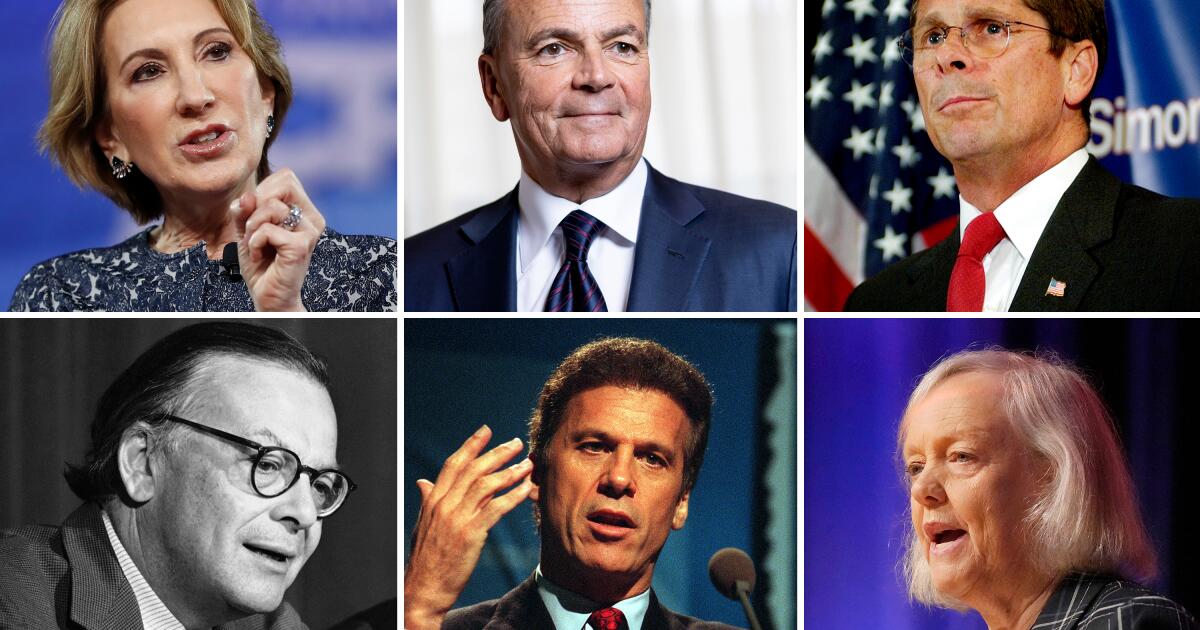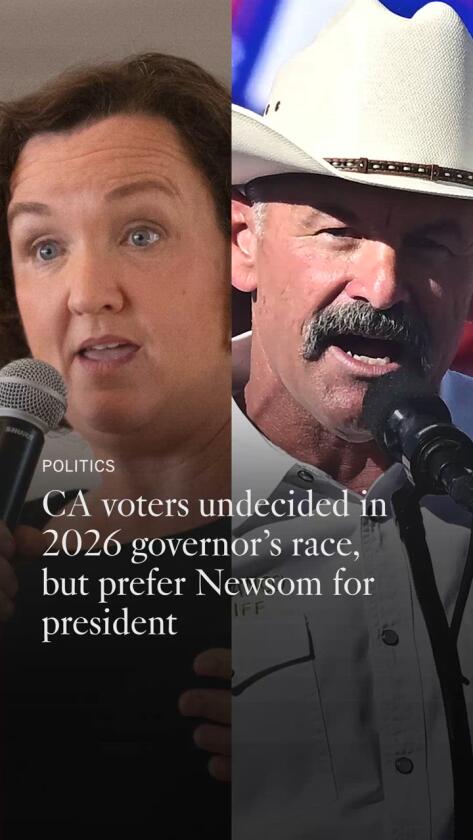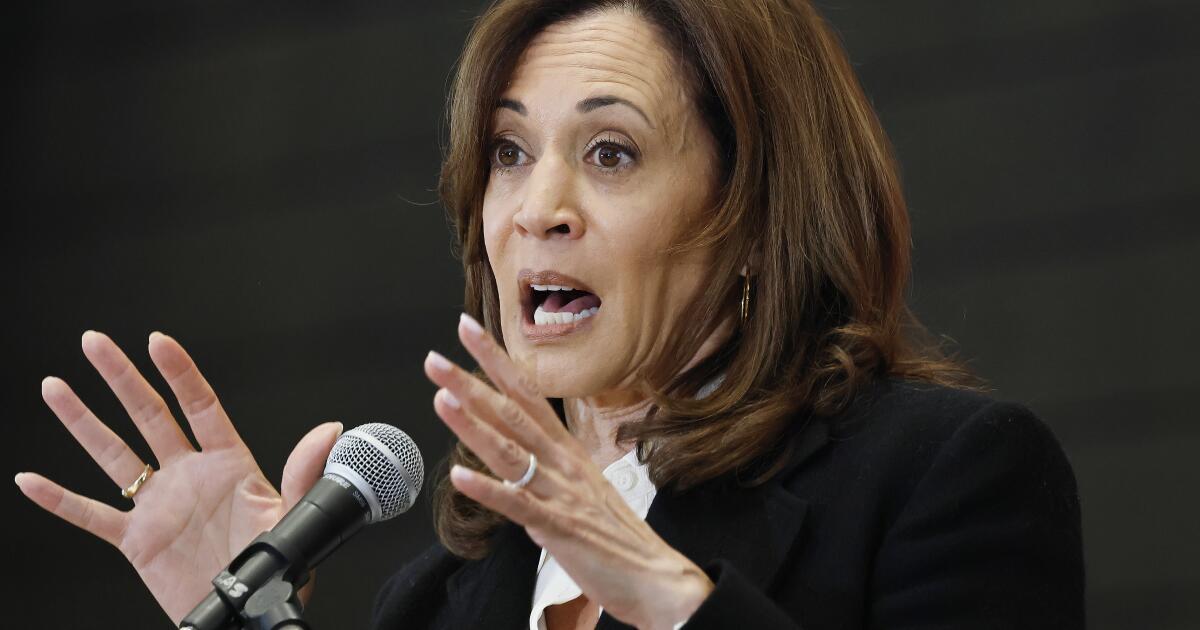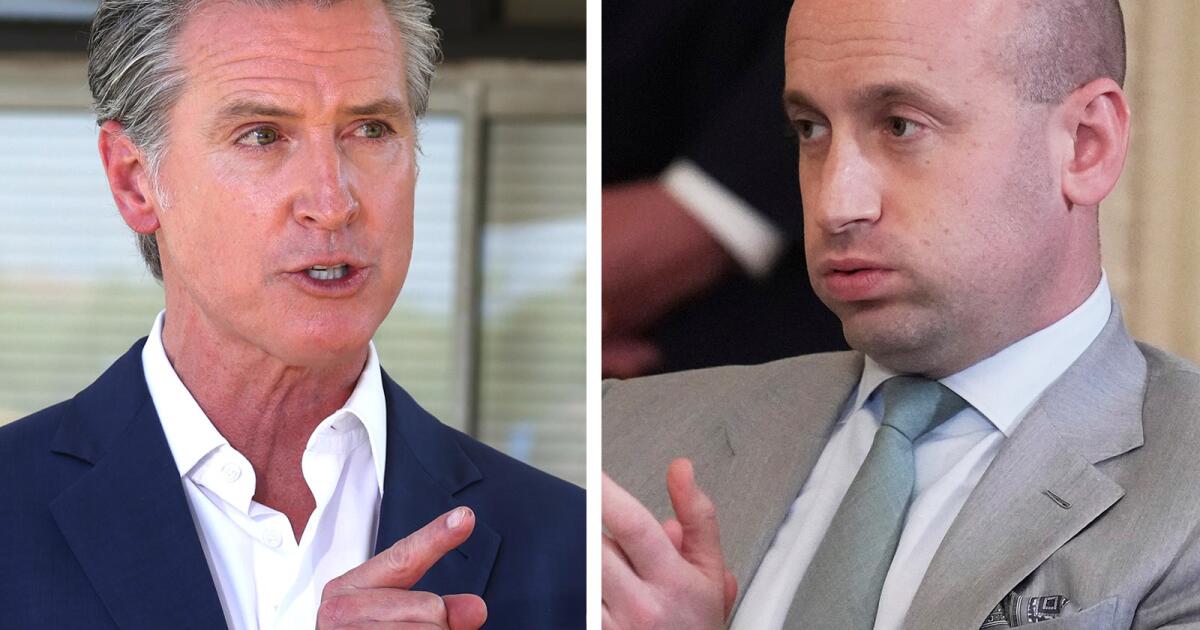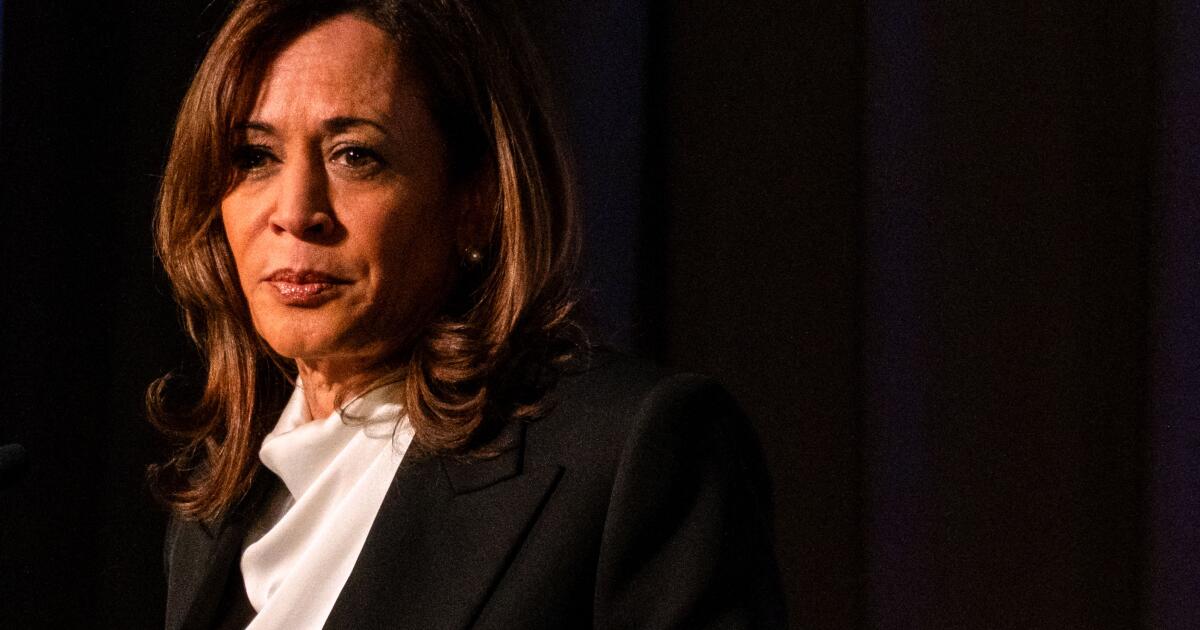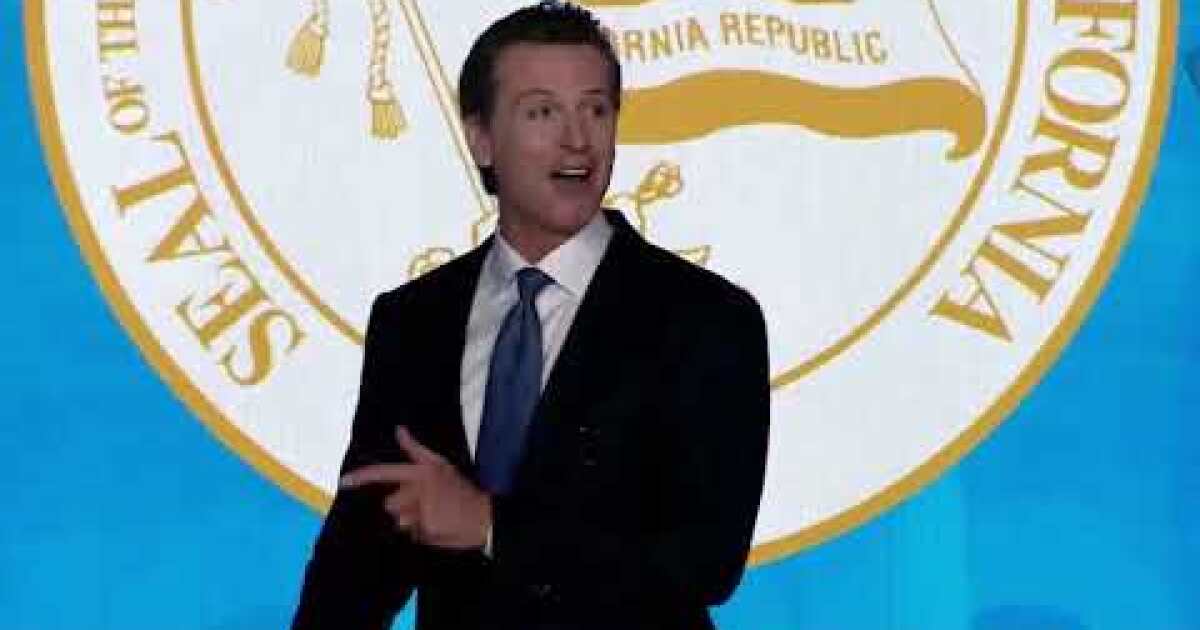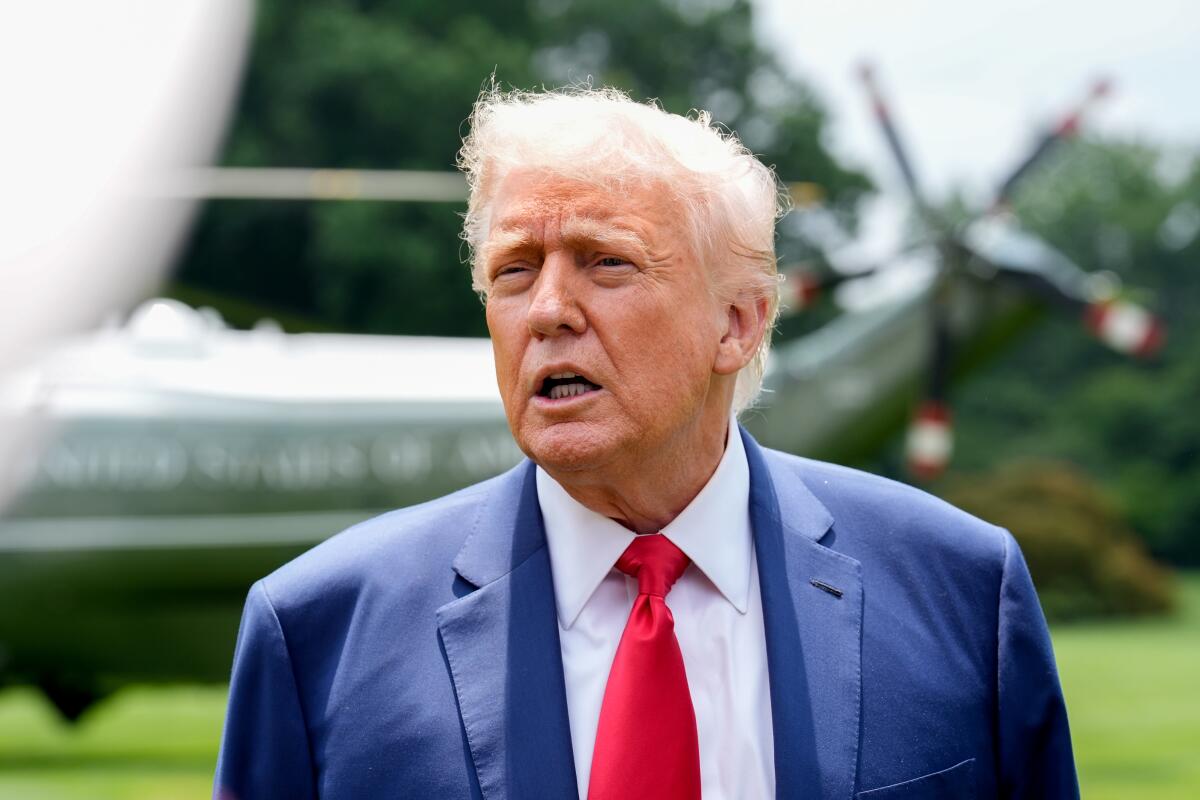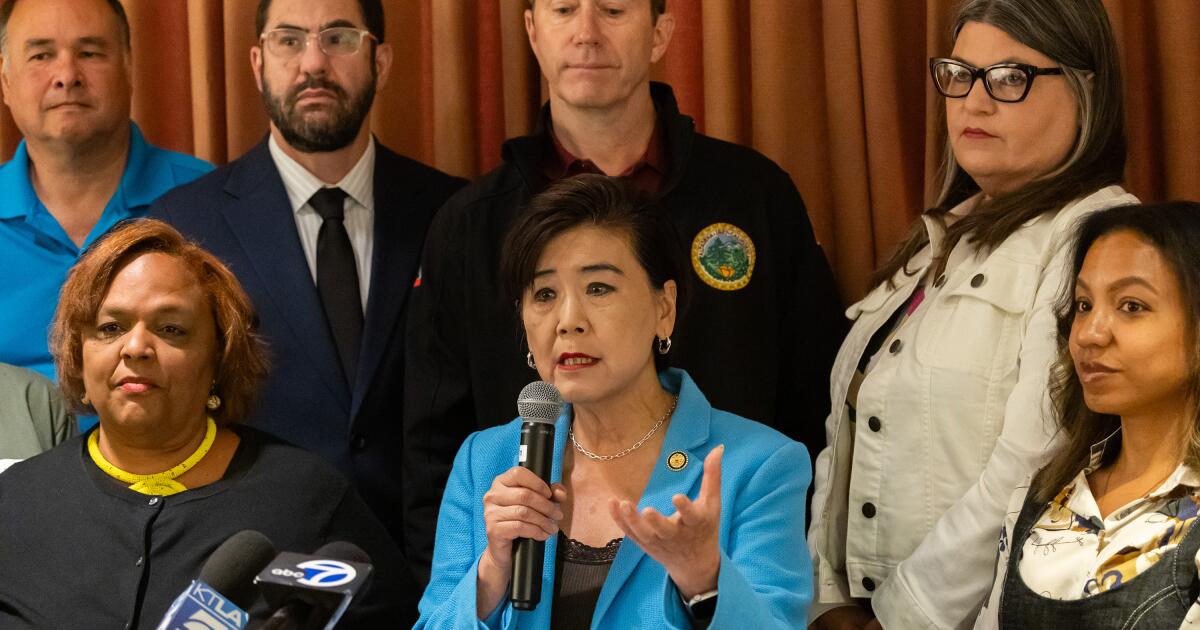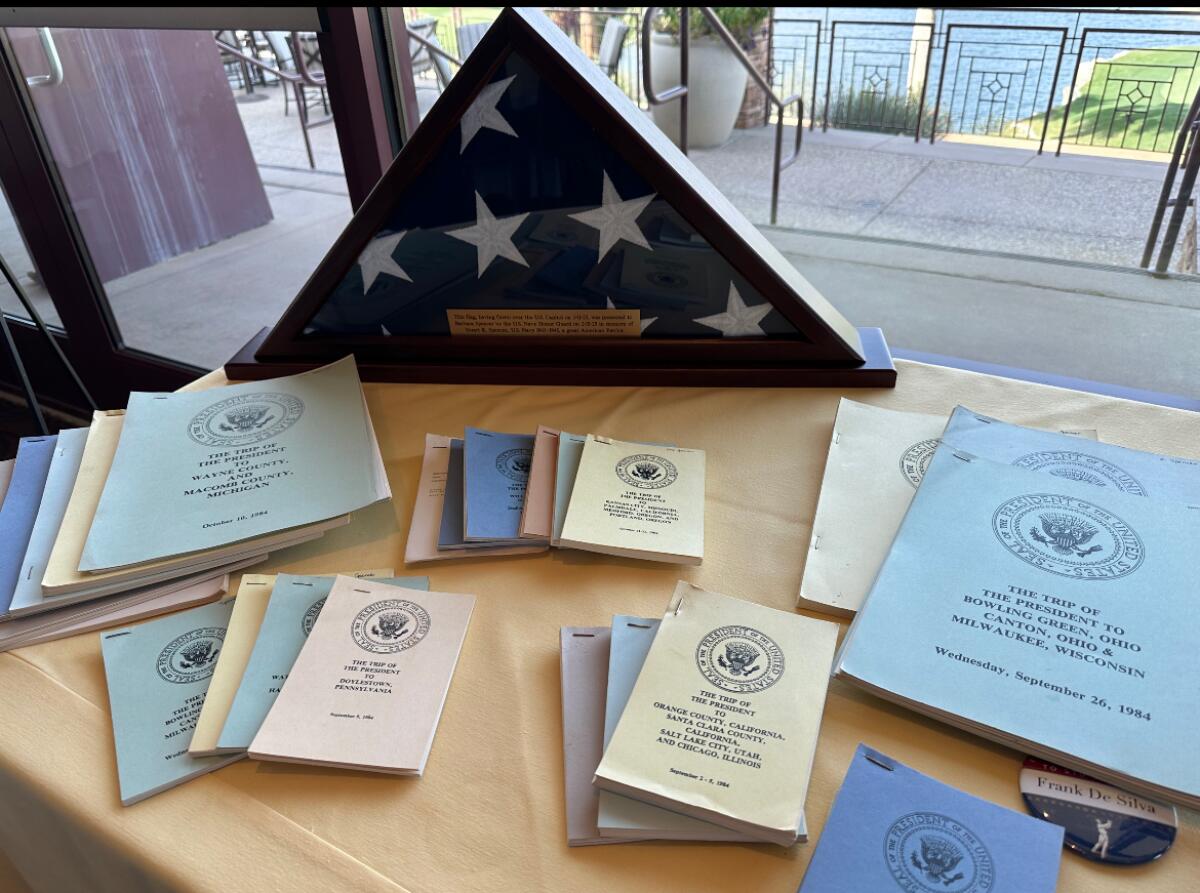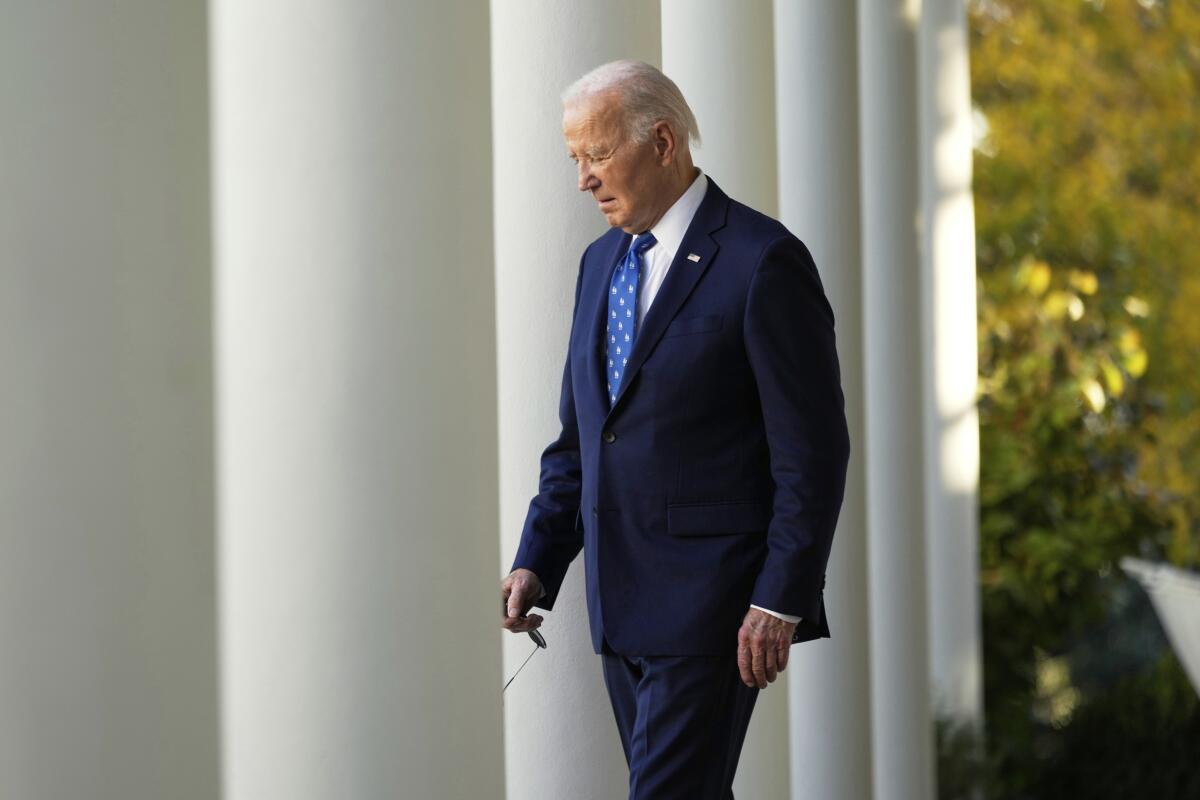Support for gubernatorial hopeful Katie Porter slips after outburst
SACRAMENTO — A new poll shows that former Orange County Rep. Katie Porter’s support in the 2026 governor’s race dropped after she tangled with a television reporter during a heated interview in October, an incident that rival candidates used to question her temperament.
Porter was the clear front-runner over the summer, but by late October she dropped behind Riverside County Sheriff Chad Bianco, a Republican, according to a poll released Friday by the UC Berkeley Institute of Governmental Studies and co-sponsored by The Times.
Still, nearly half of the registered voters surveyed remain undecided, evidence that few Californians are paying attention to a race that remains wide open and was eclipsed in recent months by the costly and successful congressional redistricting battle that became a referendum on President Trump. Porter remains the most favored Democratic candidate, which is significant in a state that has not elected a Republican governor since 2006.
“She’s the leading Democrat among the various ones that are in there right now,” said Mark DiCamillo, director of the poll. “But it’s because nobody really on the Democratic side has really jumped out of the pack. It’s kind of a political vacuum at the moment.”
The governor’s race was frozen in stasis for most of the year, first as Californians waited for former Vice President Kamala Harris to decide whether she was going to jump into the race. It wasn’t until late July that Harris announced, no, she was not running. Then, weeks later, Californians became captivated by a special election to reconfigure the state’s congressional districts — which set off a furious, expensive and high-stakes political battle that could help decide which party controls the U.S. House of Representatives.
Now that the special election is over, gubernatorial candidates can “rev up the public to pay attention,” DiCamillo said.
“It’s the time for someone to break through,” he said.
But it won’t be U.S. Sen. Alex Padilla. The senator would have been the top Democrat in the race, but not a heavy favorite, if he decided to jump in, the poll found. Voters gave him the highest favorability rating among all current and potential contenders in the governor’s race. After months of speculation, however, Padilla on Tuesday announced he would forgo a run for governor.
The new poll found that Bianco was supported by 13% of voters in the state, followed by Porter at 11%. The Berkeley poll in August showed that Porter led all candidates with 17% support, with Bianco in second place at 10%.
A Bianco representative said his lead in the polls was evidence that his campaign was resonating with voters.
“It is abundantly clear that Californians are demanding a new path forward,” campaign manager Erica Melendrez said. “Sheriff Bianco represents a safe California, an affordable California, an educated California and a leader with integrity and character that ALL Californians can be proud of.”
DiCamillo said Porter’s 6% drop over those three months was significant, given that the California governor’s race is so tight, but cautioned that it’s still early in the 2026 campaign season and a lot of shifting will happen before the June gubernatorial primary.
Porter’s campaign declined to comment on the drop in support and noted instead that she still led the Democratic field.
“Poll after poll continues to show Katie as the strongest Democrat in the race, driven by a growing coalition of grassroots supporters — not powerful special interests,” spokesperson Peter Opitz said. “Californians know her record of taking on Donald Trump and trust her to tackle our cost crisis, from skyrocketing rent and housing costs to rising healthcare premiums and unaffordable child care.”
Porter came under fire in October after an outburst during an interview with CBS reporter Julie Watts. When the Sacramento-based journalist asked Porter what she would say to Californians who voted for Trump, the UC Irvine law professor responded that she didn’t need their support.
After Watts asked follow-up questions, Porter accused the reporter of being “unnecessarily argumentative,” held up her hands and later said, “I don’t want this all on camera.”
The next day, a 2021 video emerged of Porter berating a staff member during a videoconference with a member of the Biden administration. “Get out of my f— shot!” Porter said to the young woman after she came into view in the background. Porter’s comments in the video were first reported by Politico.
Porter later acknowledged that she mishandled the television news interview, but explained that she felt the reporter’s questioning implied she should cater to Trump’s supporters. Porter also said she apologized to her staff member, saying her remarks were “inappropriate,” that she values her staff and could have handled that situation better.
Her Democratic gubernatorial rivals seized on the videos. Former state Controller Betty Yee called on Porter to drop out of the race, and businessman Stephen Cloobeck and former Los Angeles Mayor Antonio Villaraigosa attacked her in ads about the uproar.
While difficult to assess, the negative news coverage and publicity surrounding those incidents appear to have taken a toll on Porter’s reputation. No other candidate experienced a similar shift in support.
According to the new poll, 26% of California voters had a favorable opinion of Porter, compared with 33% who saw her unfavorably — with the remainder having no opinion. That’s a major drop from when she was running for the U.S. Senate last year, when 45% of voters had a favorable opinion in February 2024 and 27% were sour on her.
Political scientist Eric Schickler, co-director of the Berkeley institute that conducted the poll, said Porter looks vulnerable, and that makes the governor’s race a more attractive contest for current candidates and those who may be considering joining it.
Aside from Porter and Bianco, the poll found that 8% of voters favored former U.S. Health and Human Services Secretary Xavier Becerra, a Democrat; the same percentage backed conservative commentator Steve Hilton. Villaraigosa had support from 5% of voters, Yee 3%, and California Supt. of Public Instruction Tony Thurmond 1%. Cloobeck and former Democratic legislator Ian Calderon registered less than 1%.
Another potential candidate — billionaire developer Rick Caruso — was backed by 3% of voters, the poll found. Caruso said Monday night that he still was considering running for either governor or Los Angeles mayor and will decide in a few weeks.
Schickler said the results of Tuesday’s election may be a sign that moderate or business-friendly Democrats — including Caruso — may not fare so well in a state as Democratic as California. Voters across the nation delivered a sharp rebuke to Trump, electing Democrats in major races in New York City, New Jersey and Virginia and passing Proposition 50, the California ballot measure designed to help Democrats take control of the U.S. House of Representatives after the 2026 election.
“Somebody like Caruso, his narrative would probably look a lot stronger if Democrats still seemed on the defensive and in disarray,” Schickler said. “But after Prop. 50 passing, big Democratic wins in New Jersey and Virginia, I think the argument for a need to change what we’re doing dramatically, at least in a state like California, is less likely to resonate.”
The Berkeley IGS/Times poll surveyed 8,141 California registered voters online in English and Spanish from Oct. 20 to 27. The results are estimated to have a margin of error of 2 percentage points in either direction in the overall sample, and larger numbers for subgroups.
